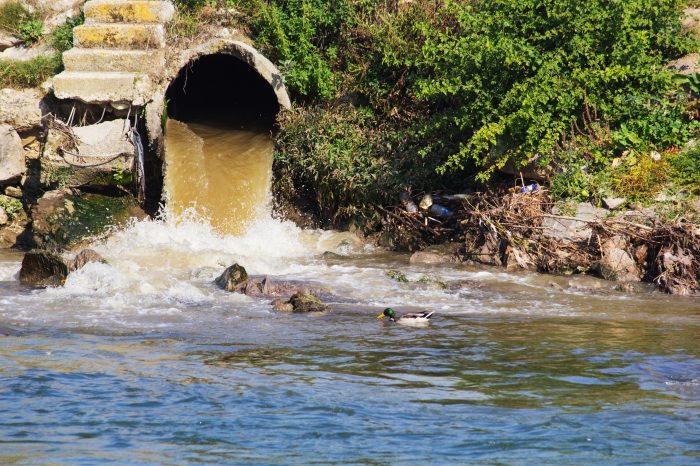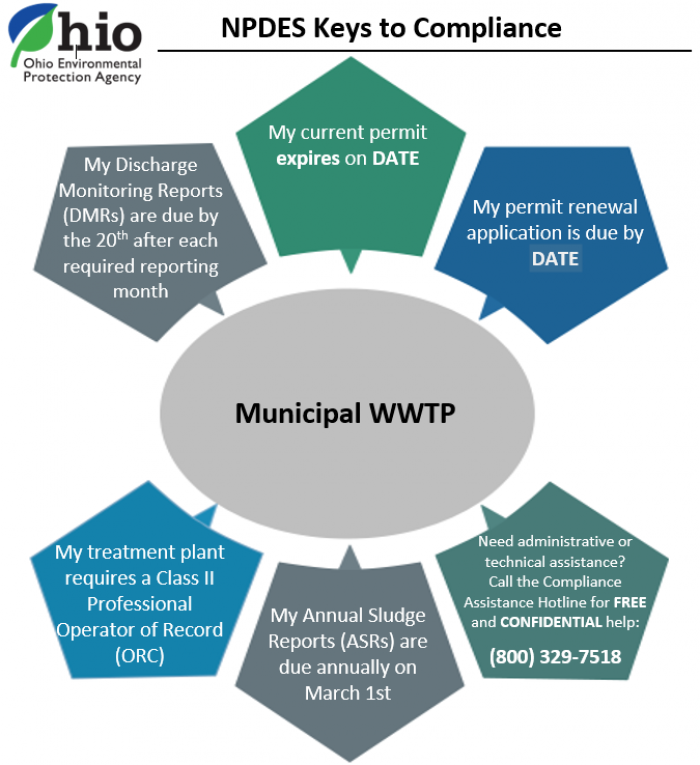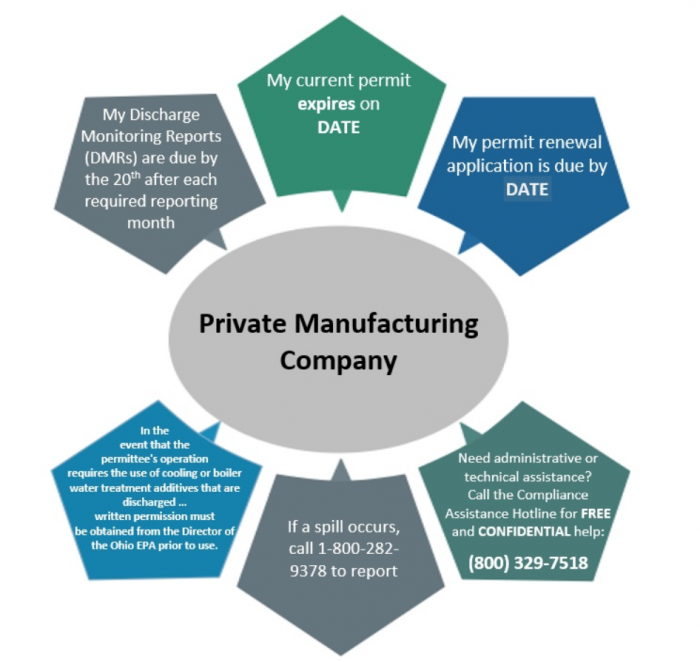Surface Water Compliance Initiatives Cooperative Agreement Between Ohio and U.S. EPA
USEPA Strategic Plan
National Compliance Initiative (NCI)
(2018-2022)

The USEPA has adopted a strategic plan for increasing surface water compliance with environmental regulations by focusing on areas with significant noncompliance issues. USEPA is working with the Ohio EPA to incorporate a range of compliance assurance tools. As part of this initiative, states will share in the determination of significant noncompliance, development of a streamlined process for issuance of a notice of violation and Resolution of Violation, and creation of working industry partnerships designed to avoid noncompliance.
NPDES Program
In
2018, USEPA selected the Clean Water Act (CWA) National Pollutant Discharge
Elimination System (NPDES) as the first program targeted to increase compliance
and reduce the number of SNC permittees.
Under this initiative USEPA redefined significant noncompliance (SNC) to
include failure to submit a discharge monthly monitoring report (DMR), failure
to meet a permit compliance schedule milestone, violation of formal enforcement
actions, failure to renew an NPDES permit on time, and significant permit
effluent violations.
Significant
permit effluent violations are determined by:
- Effluent
Exceedances- 40%
exceedance for conventional pollutants (BOD, TSS, oil and grease)
- 20%
exceedances for toxic pollutants (metals, cyanide, chlorine)
- 40%
- Chronic
Violations- Any
monthly effluent exceedance (any pollutant) for 4 or more months in a 6-month period.
- Any
Frequent
areas of SNC include non-submittals of DMRs (55%), effluent exceedances (25%),
and violation of compliance schedules (20%).
Added
enforcement also includes common stormwater violations such as no stormwater
pollution prevention plan (SWPPP); a SWPPP that is not updated, revised, or where
training has not been provided; failure to implement the Best Management
Practices (BMPs) within the SWPPP; and failure to conduct required sampling
and/or inspections.
Non-Compliance with Requirements
In
the event a facility does not comply with these NPDES permit and/or SWPPP
requirements, a Notice of Violation (NOV) will be issued by the local
district Ohio EPA, Division of Surface Water (DSW) inspector identifying the
legal requirements and areas of noncompliance. The NOV will require the
owner/operator of the facility to respond to the NOV within 30 days from the date
of issuance. The owner/operator is
strongly encouraged to work closely with the district DSW inspector to resolve
those state violations. If the facility fails to respond to the NOV and/or
implement corrective measures, the matter will be referred to the Ohio EPA for
enforcement as a SNC. However, if the
issues of noncompliance are resolved, the Ohio EPA will issue the facility a
Resolution of Violation letter acknowledging that the compliance issues have
been properly resolved and the facility returned to compliance.
EnviroScience
can aid facilities with these compliance matters. It is important that you read and understand
the terms and conditions of your NPDES permit to identify tasks, reporting
requirements, trigger events, recordkeeping, and training requirements.
Understand your permit’s required compliance deadlines for sampling, reporting,
inspections, training, and plan development and implementation.
If
you determine an incident of noncompliance (unauthorized spill or release,
violation of effluent limit, failure to timely sample and remit DMR) has occurred
or observed one during an inspection, determine the appropriate actions to promptly
undertake to correct the issue, document the corrective measures, and report
the matter, as may be required under the permit. Consistently review your SWPPP for any
changes and/or conditions at your facility, including the effectiveness of BMPs
and other stormwater management programs.
Routinely train employees on the environmental regulations, in addition to those requirements set forth under the NPDES and SWPPP. Properly document employee training and information provided during the training.
Navigational Tools for Compliance
The following are a couple of example templates your facility can use as a navigation tool for surface water compliance. Learn more about understanding your NPDES permit here.

